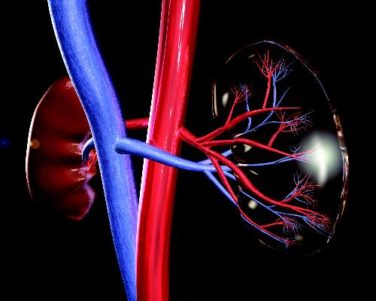FROM THE GASTROINTESTINAL CANCERS SYMPOSIUM
A new sequential neoadjuvant regimen using short-course radiation offers a similarly effective and more convenient treatment option for locally advanced rectal cancer when compared with standard chemoradiation, finds a randomized phase III trial being reported at the Gastrointestinal Cancers Symposium.
The trial, known as Polish II, was conducted among 515 patients from centers throughout Poland who had stage cT4 or fixed cT3 disease but no distant metastases.
Those in the investigational arm received a short course of radiation therapy lasting just 5 days, followed by three cycles of FOLFOX-4 chemotherapy given over 6 weeks. Those in the control arm received chemoradiation consisting of 5.5 weeks of radiation with fluorouracil, leucovorin, and oxaliplatin. After a rest, all patients underwent surgery at 12 weeks from the start of treatment.
The trial failed to meet its primary endpoint of a significantly higher rate of radical resection with the new regimen vs. chemoradiation, according to data reported in a presscast held before the symposium. However, it did find a lower rate of acute toxicity and, with 35 months of follow-up, an absolute 8% improvement in the 3-year rate of overall survival.
“Despite the fact that the trial was negative … we show for the first time an alternative to the standard chemoradiation lasting for 5 and a half weeks,” said study coauthor Dr. Lucjan Wyrwicz, head of the Medical Oncology Unit in the Department of Gastrointestinal Cancer at the Maria Sklodowska-Curie Memorial Cancer Center and Institute of Oncology in Warsaw.
The new regimen may be preferable in some clinical scenarios, he noted. For example, the short course of radiation may appeal to patients who want to minimize time off from work, and it may be advantageous when cost or lack of insurance is an issue, and in low-resource countries where there are not enough radiation therapy facilities to go around.
Additionally, the regimen is a more attractive option in patients who have metastases, as they can get some full chemotherapy upfront. In contrast, with chemoradiation, it is typically delayed until several weeks after surgery, essentially leaving metastases uncontrolled in the meantime.
“Having two standards is better than having one standard. We need to try to personalize medicine,” Dr. Wyrwicz summarized.
A caveat to the trial was the use of oxaliplatin, which was included in the protocol before other trials showed that it did not improve outcomes but did add toxicity, he noted. The protocol was amended partway through to allow its omission, but about two-thirds of patients in both arms received the drug. However, findings were much the same whether patients received oxaliplatin or not, he said ahead of the symposium, which was sponsored by ASCO, ASTRO, the American Gastroenterological Association, and the Society of Surgical Oncology.
ASCO expert and presscast moderator Dr. Smitha Krishnamurthi commented, “This is a randomized comparison of short-course radiation with chemotherapy that is demonstrating equal efficacy to traditional chemoradiation. Giving patients a shorter, more convenient, less expensive radiation, and moving the chemotherapy (some of it) upfront appears to be equally active to the chemoradiation. So it does give patients another choice.”
The finding of a lower rate of acute toxicity with the new regimen should be viewed with caution, given the use of oxaliplatin in chemoradiation, which would not be done today, she said.
Uptake of short-course radiation has been greater in Europe than in the United States, according to Dr. Krishnamurthi of Case Western Reserve University, Cleveland. This is possibly because of data from an earlier trial by the Trans Tasman Radiation Oncology Group showing a nonsignificantly higher rate of local recurrence with the short course in patients with less advanced disease.
“There are some other randomized trials which are ongoing, so there’s a lot of interest in this short-course radiation. And I think when we have all of this data together, we will be in a much better position to incorporate it,” she concluded.
In the Polish II trial, the rate of radical (R0) resection did not differ significantly between the new short-course regimen and chemoradiation, although there was a trend favoring the former (77% vs. 71%; P = .081), Dr. Wyrwicz reported.
Patients given the new regimen were less likely to experience acute toxicities (75% vs. 83%; P = .006) but not specifically grade 3 and 4 toxicities. The rate of pathologic complete response did not differ significantly.
The 3-year overall survival rate was higher with the new short-course regimen (73% vs. 65%; P = .046). The groups did not differ significantly with respect to disease-free survival or the incidences of local failure and distant metastases.






